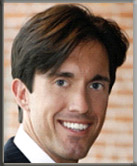March 26, 2012
Framework for the Virtual Government Network
Updated with video of Thom Kearney presenting on the Virtual Government Network at PSengage, November 22nd, 2011
Thom Kearney – The virtual Government Network @ PSEngage2011 – November 22, 2011 from PSEngage on Vimeo.
Original post from Jan 6th, 2011:
The following material comes from a paper I recently finished as part of my studies. I took the opportunity to combine what I have learned about Information Management and Collaboration and then apply that knowledge to something that might be practical. If you want the paper you can find it on the Articles page, here is a somewhat abridged version for your perusal and comment. By the way, if you do comment I promise to get back to you, however my response may not be immediate.
Virtual Government Network Collaboration Framework
The framework elements generic in the sense that they could apply to any large-scale collaboration network; in this example they have been populated with the Virtual Government Network in mind.



 As many of you know I am helping to put together a networking and learning event as part of the
As many of you know I am helping to put together a networking and learning event as part of the 